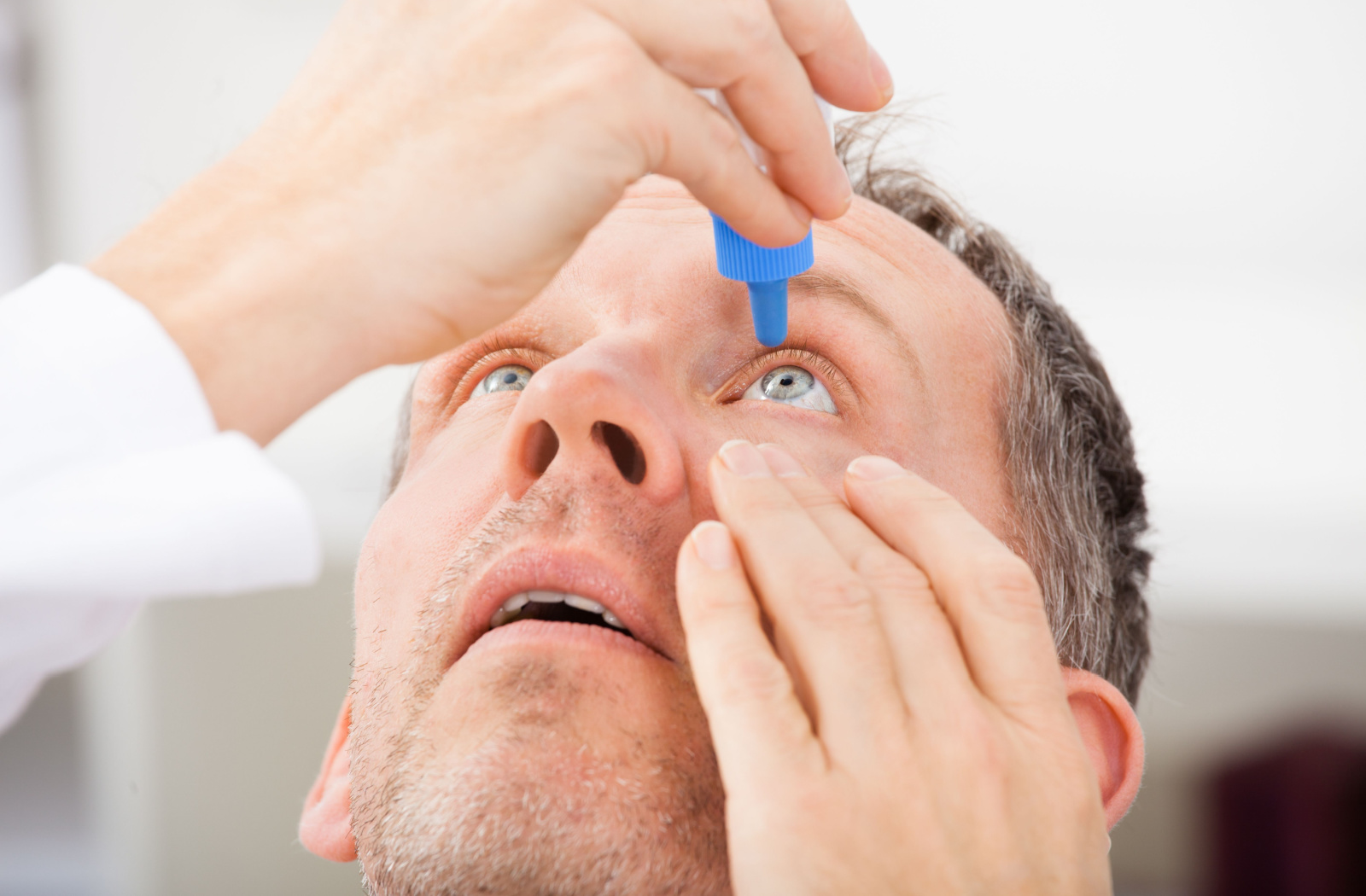Your vision is a window to the world and as unique as a fingerprint. But sometimes, to keep that window clear, you need a little help from eye drops.
Whether you need relief from dry eyes or you’re using eye drops as part of your treatment for another eye condition, like glaucoma, it’s important to use them without missing your eye.
After making sure you wash your hands, you’ll want to follow these steps to use eye drops without missing:
- Remove the lid of the dropper and avoid touching the tip
- Tilt your head back slightly and look up
- Carefully pull your lower eyelid away from your eye, forming a pocket
- Use your other hand to hold the dropper above the pocket
- Squeeze the bottle until an eye drop falls into the pocket
- Close your eyes for at least 30 seconds to 2 minutes
- Wipe away the excess liquid before opening your eyes
Why Precision Matters
Using eye drops might seem straightforward. You just tilt your head back, squeeze, and you’re done, right? If only it were that simple. The truth is, a misapplied drop can be as good as a missed drop. For medications to do their job, they need to reach the right spot at the right time. A bandaid on your shoulder doesn’t help the scratch on your elbow, and a missed eye drop can leave you without relief.
The “Blink & Miss” Experience
Sometimes, you squeeze the bottle, a drop falls, and your reflexes kick in just in time to close your eyes. Welcome to the blink and miss club. That reaction makes sense—people don’t like things getting in their eyes, so when you see something coming towards your eyes, you want to close them to protect yourself.
Misalignment, mistiming the squeeze, or the fear of putting something in your eye can lead to problems with using eye drops. People often underestimate the importance of posture, the role of the lower eyelid, and even how gravity affects delivering that drop to where it needs to go.
That’s something you can tweak with a little technique—and by taking a bit more time to prepare.

How to Use Eye Drops
Before you get too far into the process, start by making sure the eye drops you’re using are safe and suited to your needs. Eye drops can expire, so be sure to check the bottle for an expiration date.
Not all eye drops are the same, either. There are a lot of different types, and it’s important to use the right type for your eyes. For example, if you wear contact lenses, you need drops that won’t damage your contacts or cause complications, and for dry eyes, you should avoid eye drops with preservatives.
When you visit us, we can help you figure out which eye drops are right for you—and provide personalized guidance on how to use them.
Step 1: Pre-Drop Prep
This is where it all begins. Wash those hands thoroughly, remove any eye makeup or contact lenses—and maybe inspect the eye drop bottle once more just to be sure. Give it a shake and avoid touching the dropper’s tip when you remove the lid—so that bacteria will not get on the dropper.
Step 2: Tilt Your Head Back
Stability is your friend here. Tilt your head back slightly and look up at the ceiling. You can sit down if that makes it easier, and if it’s your first time, it’s not a bad idea to do exactly that.
Step 3: Pull Down Your Lower Eyelid
Using your free hand, gently pull down your lower eyelid. This should create a pocket for the medication.
You don’t have to stick your finger right in your eye to do this—in fact, you absolutely shouldn’t do that. You can put your finger half an inch below your eye and pull down to achieve the desired effect.
Step 5: Hold the Bottle Above Your Eye & Squeeze Gently
While still looking up, hold the bottle above your eye. This can feel a bit unnatural if you’ve never applied eye drops before, and that’s fine. There’s no sense rushing the process and wasting eye drops on your closed eyelids.
When you’re ready, squeeze the bottle gently. It doesn’t require much force to get 1 drop, which is typically all you need.
Step 6: Close Your Eyes
Once you feel the drop hit your eye, close your eye for 30 seconds to 2 minutes. This helps the medication spread across your eye and get absorbed. During this time, grab a clean tissue and blot any excess liquid.
The exact time you should keep your eyes closed when using drops can vary depending on the type of drops—we can provide specific recommendations when you visit us. For example, artificial tears for dry eyes can work relatively fast, so you can usually move on pretty quickly.
Depending on why you’re using eye drops, you may also need to repeat the steps above for each eye.
Mastering the Art of Eye Drops
Eye drops aren’t a sprint, so you don’t have to make them one. When you put in an eye drop, you’re taking care of one of the most delicate parts of the body. Consistency in technique can help you hit the mark every time.
Remember, not every time has to be perfect, either, but practice certainly helps. And as with any health routine, you can consult your doctor for advice. It’s a process, not an event, and we’re here to help.
Next time you go for that eye dropper, run through the steps in your head first. If you’re still struggling, feel free to visit us at Park Slope Eye for some personalized tips. We’re passionate about helping you feel comfortable whether you’re in our office or at home.
For optometry focused on your needs, book an appointment today!









